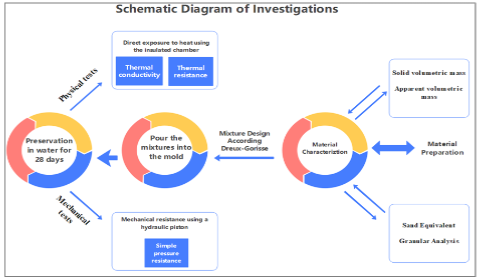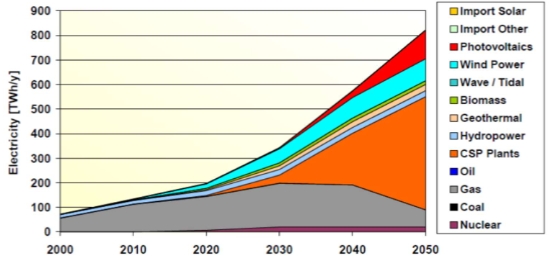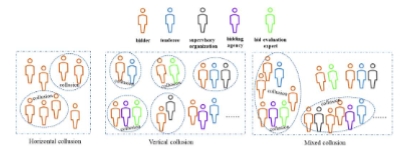Physical comfort in Statiko Coffee Shop, Wonosobo, Indonesia
Abstract
This research aims to analyze the environmental conditions inside and outside the Statiko Coffee Shop, Wonosobo, Indonesia, with a focus on noise, light intensity, air temperature, and humidity. Measurements were carried out at certain time intervals starting from 15:00 to 23:00. The collected data shows significant variations in each observed parameter. Indoors, noise levels varied, light intensity was recorded, air temperature fluctuated, and humidity ranged from 78.0% to 85.0%. Outdoors, wider variations in noise, light intensity, air temperature, and humidity were seen. The results of this research show the importance of good understanding and design regarding ventilation and environmental management to create comfort for visitors in a coffee shop. This information can be used as a basis for designing an effective ventilation system and maintaining good indoor air quality, as well as considering external environmental influences such as noise and light intensity. Further research is needed to provide more specific recommendations for optimizing the environment at the Statiko Coffee Shop, Wonosobo, Indonesia.
References
[1]Ali LA, Mustafa FA. The state-of-the-art knowledge, techniques, and simulation programs for quantifying human visual comfort in mosque buildings: A systematic review. Ain Shams Engineering Journal 2023; 14(9): 102128. doi: 10.1016/j.asej.2023.102128
[2]Asif A, Zeeshan M, Jahanzaib M. Indoor temperature, relative humidity and CO2 levels assessment in academic buildings with different heating, ventilation and air-conditioning systems. Building and Environment 2018; 133: 83–90. doi: 10.1016/j.buildenv.2018.01.042
[3]Bai Y, Jin H. Effects of visual, thermal, and acoustic comfort on the psychological restoration of the older people in a severe cold city. Building and Environment 2023; 239: 110402. doi: 10.1016/j.buildenv.2023.110402
[4]Berto R, Tintinaglia F, Rosato P. How much is the indoor comfort of a residential building worth? A discrete choice experiment. Building and Environment 2023; 245: 110911. doi: 10.1016/j.buildenv.2023.110911
[5]Chen K, Kang J, Ma H. Evaluation of healthy indoor acoustic environments in residential buildings by the occupants: A mixed-method approach. Building and Environment 2023; 246: 110950. doi: 10.1016/j.buildenv.2023.110950
[6]Hermawan H, Prianto E, Setyowati E. Indoor temperature prediction of the houses with exposed stones in tropical mountain regions during four periods of different seasons. International Journal of Civil Engineering and Technology (IJCIET) 2019; 10(5): 604–612.
[7]Hermawan H, Švajlenka J. The connection between architectural elements and adaptive thermal comfort of tropical vernacular houses in mountain and beach locations. Energies 2021; 14(21): 7427. doi: 10.3390/en14217427
[8]Hermawan H, Švajlenka J. Building envelope and the outdoor microclimate variable of vernacular houses: Analysis on the environmental elements in tropical coastal and mountain areas of Indonesia. Sustainability 2022; 14(3): 1818. doi: 10.3390/su14031818
[9]Hermawan H, Prianto E, Setyowati E, et al. The thermal condition and comfort temperature of traditional residential houses located in mountainous tropical areas: An adaptive field study approach. International Journal on Advanced Science, Engineering and Information Technology 2019; 9(6): 1833. doi: 10.18517/ijaseit.9.6.3560
[10]Jaafar H, Lakkis I, Yeretzian A. Impact of boundary conditions in a microclimate model on mitigation strategies affecting temperature, relative humidity, and wind speed in a Mediterranean city. Building and Environment 2022; 210: 108712. doi: 10.1016/j.buildenv.2021.108712
[11]Jiang Y, Wu C, Teng M. Impact of residential building layouts on microclimate in a high temperature and high humidity region. Sustainability 2020; 12(3): 1046. doi: 10.3390/su12031046
[12]Kalender-Smajlović S, Kukec A, Dovjak M. The problem of indoor environmental quality at a general Slovenian hospital and its contribution to sick building syndrome. Building and Environment 2022; 214: 108908. doi: 10.1016/j.buildenv.2022.108908
[13]Lee SJ, Song SY. Energy efficiency, visual comfort, and thermal comfort of suspended particle device smart windows in a residential building: A full-scale experimental study. Energy and Buildings 2023; 298: 113514. doi: 10.1016/j.enbuild.2023.113514
[14]Lotfabadi P, Hançer P. Optimization of visual comfort: Building openings. Journal of Building Engineering 2023; 72: 106598. doi: 10.1016/j.jobe.2023.106598
[15]Marchione F, Chiappini G, Munafò P. Effect of temperature and relative humidity on the shear performance of double-lap adhesive joints between steel and glass adherends. Journal of Building Engineering 2022; 45: 103546. doi: 10.1016/j.jobe.2021.103546
[16]Mesloub A, Alnaim MM, Albaqawy G, et al. The visual comfort, economic feasibility, and overall energy consumption of tubular daylighting device system configurations in deep plan office buildings in Saudi Arabia. Journal of Building Engineering 2023; 68: 106100. doi: 10.1016/j.jobe.2023.106100
[17]Özbey MF, Turhan C. A novel comfort temperature determination model based on psychology of the participants for educational buildings in a temperate climate zone. Journal of Building Engineering 2023; 76: 107415. doi: 10.1016/j.jobe.2023.107415
[18]Peng Y, Antanuri N, Lau SK, et al. Experimental assessment of thermal and acoustics interactions on occupant comfort in mixed-mode buildings. Building and Environment 2023; 238: 110342. doi: 10.1016/j.buildenv.2023.110342
[19]Takebayashi H. Effects of air temperature, humidity, and wind velocity distribution on indoor cooling load and outdoor human thermal environment at urban scale. Energy and Buildings 2022; 257: 111792. doi: 10.1016/j.enbuild.2021.111792
[20]Vanage S, Dong H, Cetin K. Visual comfort and energy use reduction comparison for different shading and lighting control strategies in a small office building. Solar Energy 2023; 265: 112086. doi: 10.1016/j.solener.2023.112086
Copyright (c) 2023 Hermawan Hermawan, Syah Reza Pahlavi Muhammad, Daffa Amrulloh Mohamad, Nabila Arrizqi Annisa

This work is licensed under a Creative Commons Attribution 4.0 International License.












